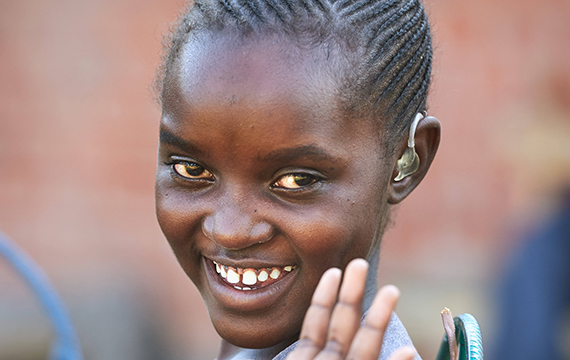World Hearing Day

Many of the causes that lead to hearing loss are preventable. Particularly in children, in whom 60% of hearing loss can be prevented through public health strategies. Some interventions can be as straight forward as a timely treatment prescribed for an Acute Otitis Media. This is a painful infection of the middle ear, majorly in children, which if treated early with a simple antibiotic, can avoid serious complications, like the perforation of the eardrum, developing into a chronic otitis media or even death. Death may occur if the infection extends outside the middle ear into the brain cavity, causing meningitis or a brain abscess. Each year, 21,000 people die due to complications of otitis media, the majority of them are children under 4 years of age living in low- and middle- income countries.
Hearing care and hearing loss were highlighted as a public health issue with the adoption of the resolution (WHA70.13) on prevention of deafness and hearing loss during the World Health Assembly in 2017. This resolution calls upon WHO and its Member States to undertake advocacy through World Hearing Day on 3rd March and, taking into consideration their own circumstances, to address key topics through national programmes and strategic plans.
cbm and partners can, and already do, contribute to strengthening EHC by:
- supporting partners alongside their national governments towards integrating strategies for EHC within the framework of their primary health care systems;
- collecting high-quality population-based data on ear diseases and hearing loss in order to develop evidence-based strategies and policies;
- establishing suitable training programmes for the development of human resources in the field of EHC;
- contributing towards ensuring the highest possible vaccination coverage against rubella, measles, mumps and meningitis, in accordance with national priorities;
- collaborating to develop, implement and monitor screening programmes for early identification of ear diseases, and hearing loss in high-risk populations
- improving access to affordable, cost-effective, high-quality, assistive hearing technologies and products, including hearing aids and other assistive devices;
- advocating to develop and implement regulations for the control of noise in occupational settings, at entertainment venues and through personal audio systems, as well as for the control of medicines which may damage hearing
- improving access to a variety of ways of communicating through promoting alternative methods of communication, such as sign language and captioning;
- working towards the attainment of Sustainable Development Goal 3 (Ensure healthy lives and promote well-being for all at all ages) and Goal 4 (Ensure inclusive and equitable quality education and promote lifelong learning opportunities for all) in the 2030 Agenda for Sustainable Development, with special reference to people with hearing loss.
